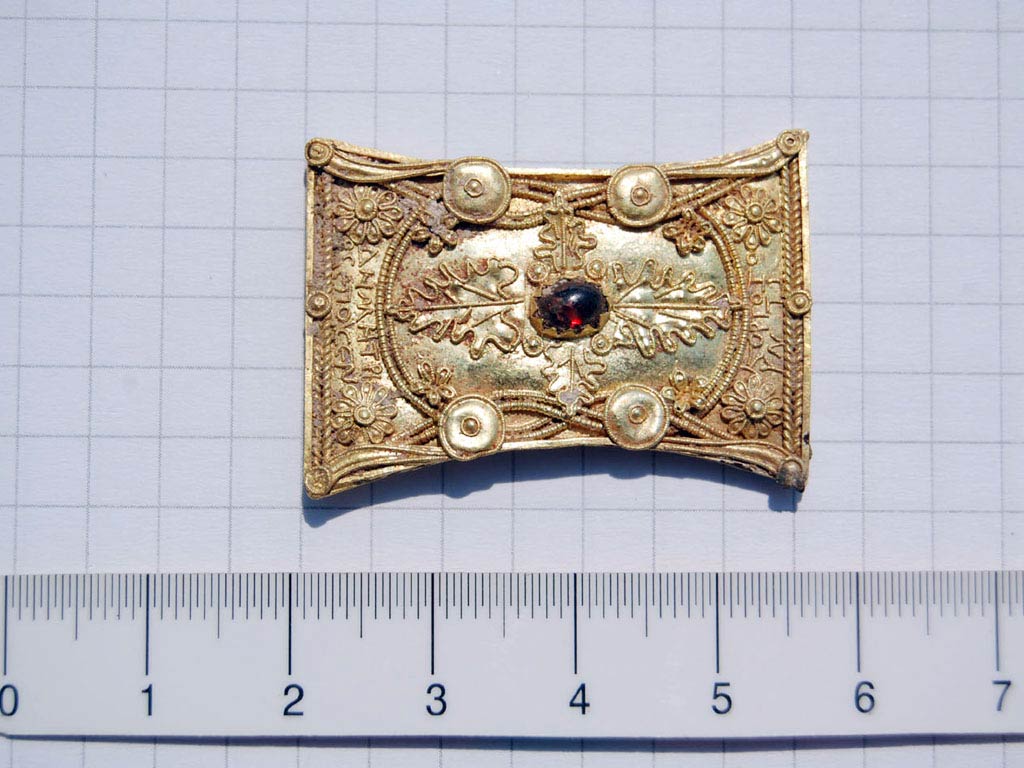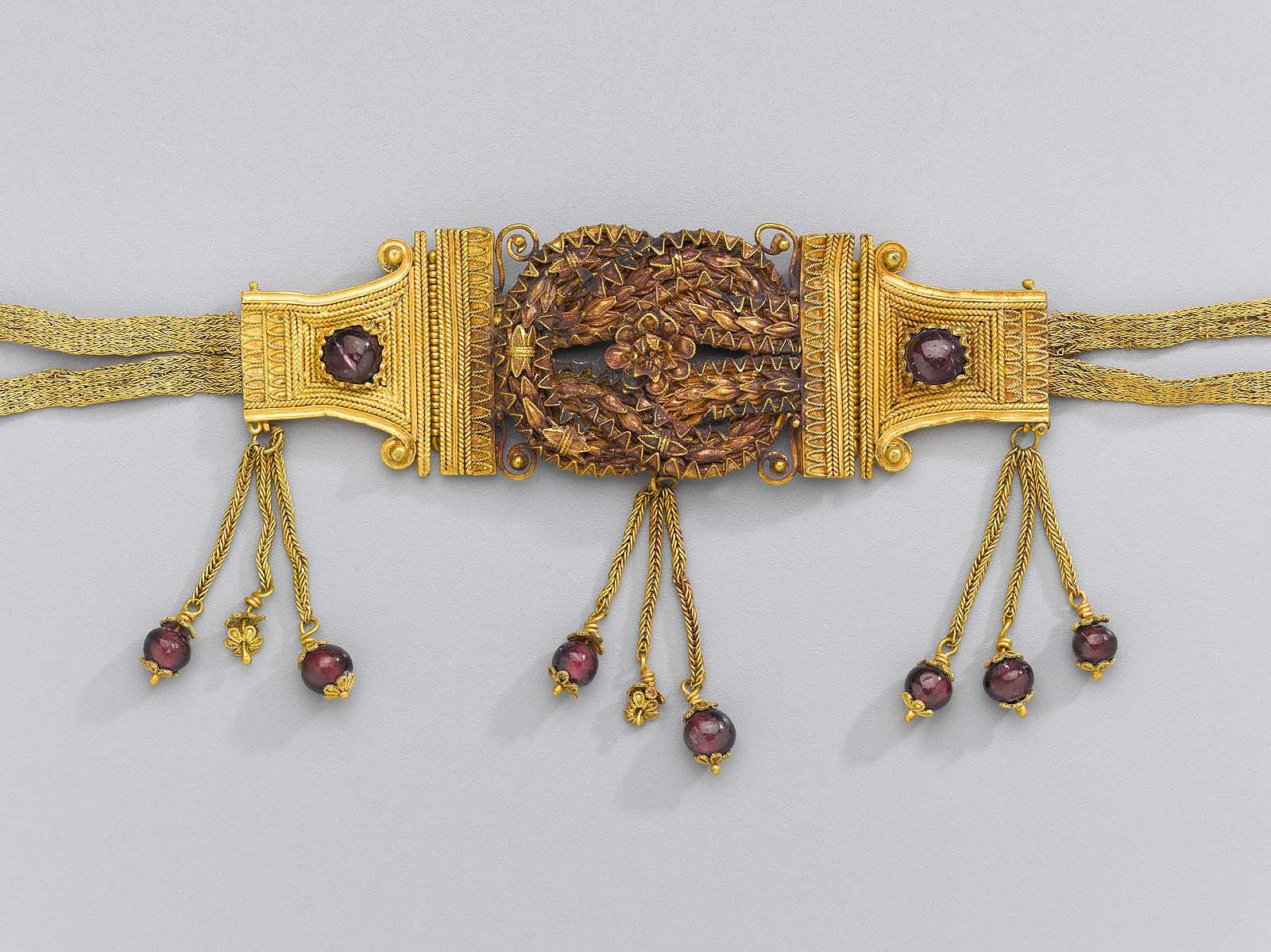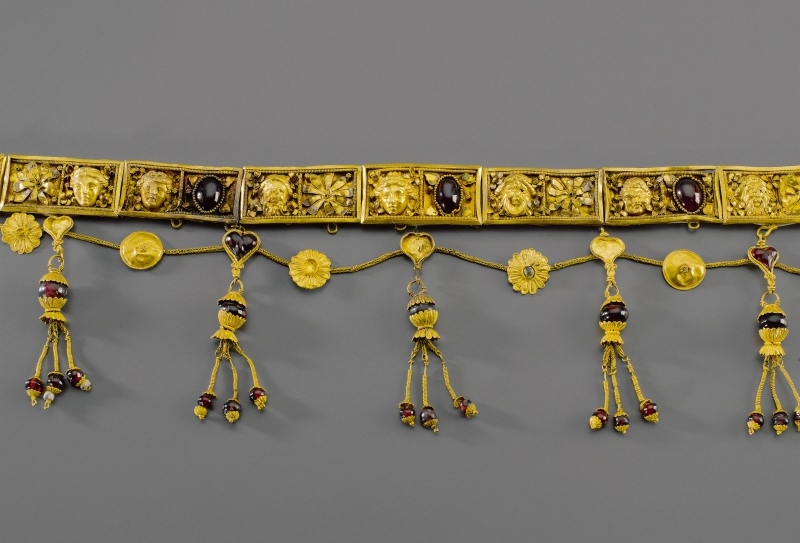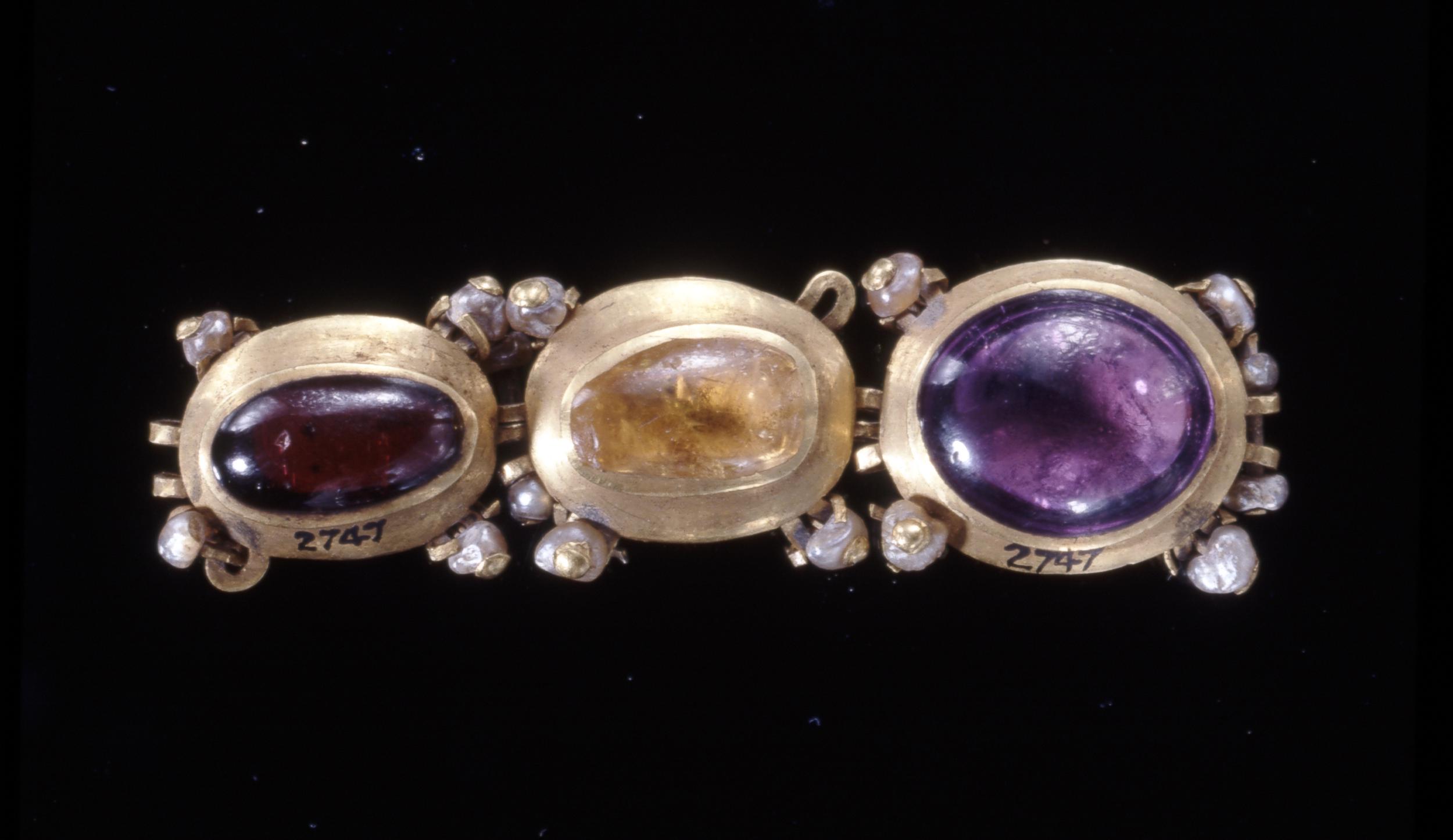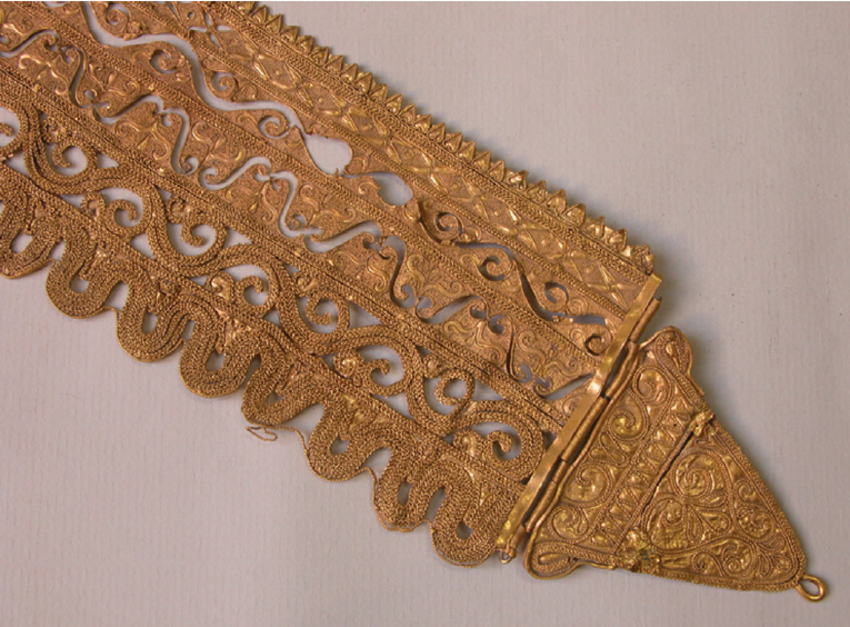Hellenistic, southern Black Sea
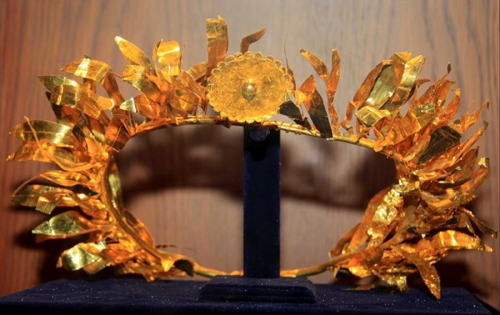
https://antiksikkelernumizmatik.com/konu/amisos-antik-kenti-sikkeleri.295/
Grave 2. Myrtle wreath. Inv. 1-48/1996
“Grave 2 contained the badly degraded cremated remains of a male (?) and what may have been a wooden sarcophagus. The skeleton was covered with a thin gold sheet and the remnants of corroded bronze strings (possibly jewellery). Small gilded terracotta beads were scattered over the skeleton. Three alabastra were beside the head and body. On the head was a gold myrtle wreath (Fig. 2) partly crushed by a collapsed section of the tomb. The wreath consists of two curved tubular stems, with slender leaves of thinly beaten gold fixed directly to them. At the mid-point is a small vertical hollow tube terminating in ascalloped-edged disc, capped with a curved finial. Originally the disc may have been designed to support an ornate myrtle flower with delicate stamens, terminating in clusters of tiny closely set flowers, close in style to the myrtle wreath from Tomb D in Derveni. The Derveni wreath is dated to 330 BC by a gold coin of Alexander the Great.” [Monica M. Jackson]


“Appliques [4 pieces] in the form of rectangular plates. Open and closed palmette and wave motifs made with filigree technique are soldered into the plates, flowers on the frames. At the end of one of the appliqués there are chain dangles with two beads with pomegranate figures. There are fastening rings at both corners on the upper parts of the appliques and a total of 8 cylindrical binding rings in groups of two at the bottom. It must be a piece of clothing or a piece of jewelry.
There are flower motifs made with filigree and granulation technique on rectangular shaped plates consisting of four parts. It is possible to see very similar motifs in the floral motifs on a necklace with grave finds from Pavlovsky from 330-300 BC, and in the ornamentation of flower motifs on a gold earring from the Great Bliznitza (Williams and Ogden, 1994: no.106, 116, 122, 168, 181, 190). The same floral motif is also seen on a gold double ear rosette from a tomb in Pyre, Taman Peninsula, dated to 350-300 BC (Williams and Ogden, 1994: no.109, 172). Also, 4th-3rd century BC. The treatment of the motifs depicted on the plate in the middle of a golden myrtle-leaved diadem dated to the mid-19th century and the depiction of the flower motifs on the corners of this plate are quite similar to the motifs in the Amisos samples (Marshall, 1911: plt. XXXIX-1632, 175-176). The appliques are dated to the late 4th century BC.” [Yeni Veriler]
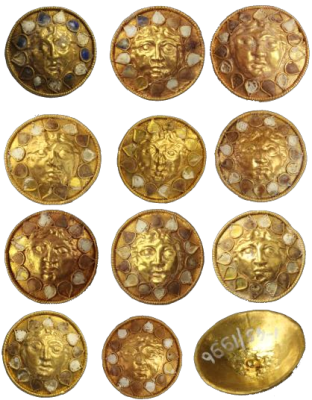

3 “buttons”, 4th C BCE
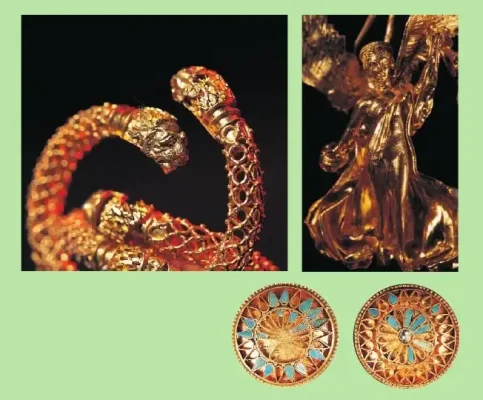

After Yeni Veriler

After Yeni Veriler

After Yeni Veriler

After Yeni Veriler
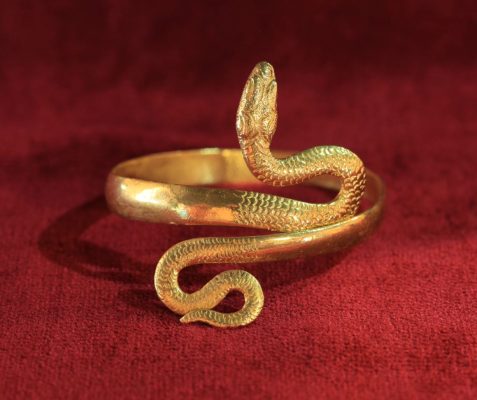
- Monica M. Jackson, The Amisos Treasure: A Hellenistic Tomb From The Age Of Mithradates Eupator, BAR International Series 2012 https://www.academia.edu/7710852/The_Amisos_Treasure_A_Hellenistic_Tomb_From_The_Age_Of_Mithradates_Eupator_BAR_International_Series_2012
- HISTORY REVEALED ANCIENT SAMSUN (AMISOS), Yusuf Sümer Atasoy https://www.academia.edu/44693290/HISTORY_REVEALED_ANCIENT_SAMSUN_AMISOS
- Amisos’da Sıradışı Bir Yeraltı Oygu Oda Mezar / An Unusual Underground Rock-Cut Chamber Tomb in Amisos; Serdar Ünan
https://www.academia.edu/25964191/Amisosda_S%C4%B1rad%C4%B1%C5%9F%C4%B1_Bir_Yeralt%C4%B1_Oygu_Oda_Mezar_An_Unusual_Underground_Rock_Cut_Chamber_Tomb_in_Amisos - YENİ VERİLER, IŞIĞINDA AMİSOS ALTIN ESERLERİ ÜZERİNE GÖZLEMLER [OBSERVATIONS ON AMISOS GOLD WORKS IN LIGHT OF NEW DATA] https://docplayer.biz.tr/224996340-Yeni-veriler-isiginda-amisos-altin-eserleri-uzerine-gozlemler-observations-on-amisos-gold-works-in-light-of-new-data.html



